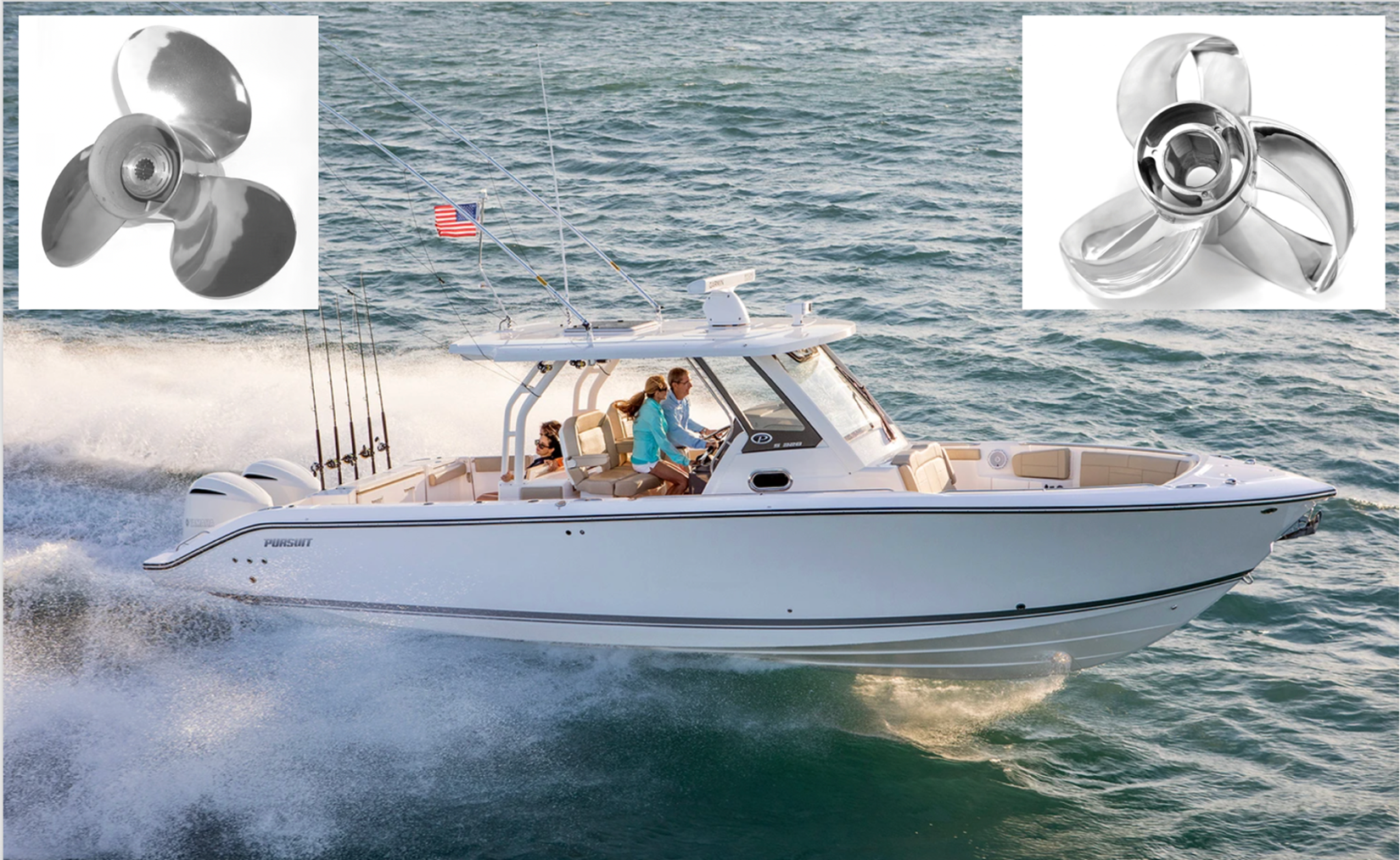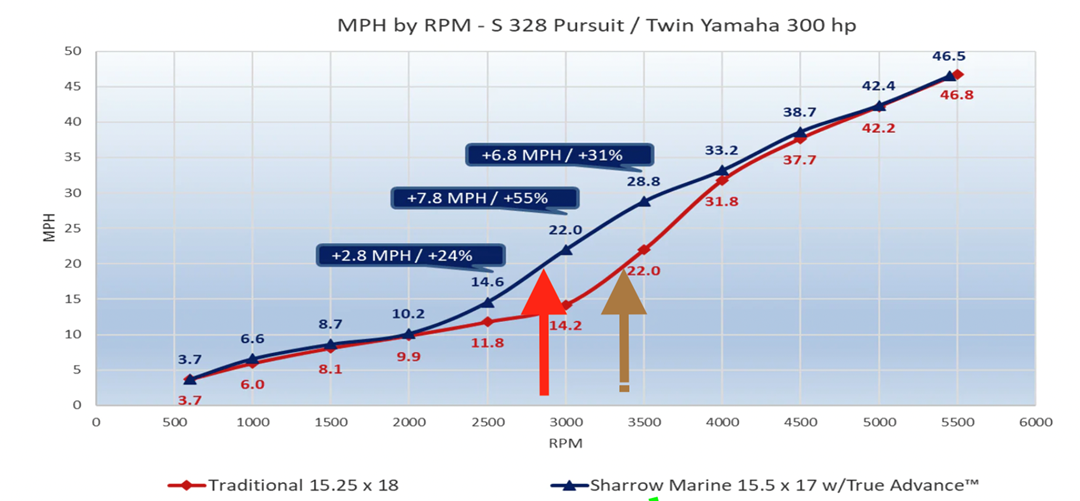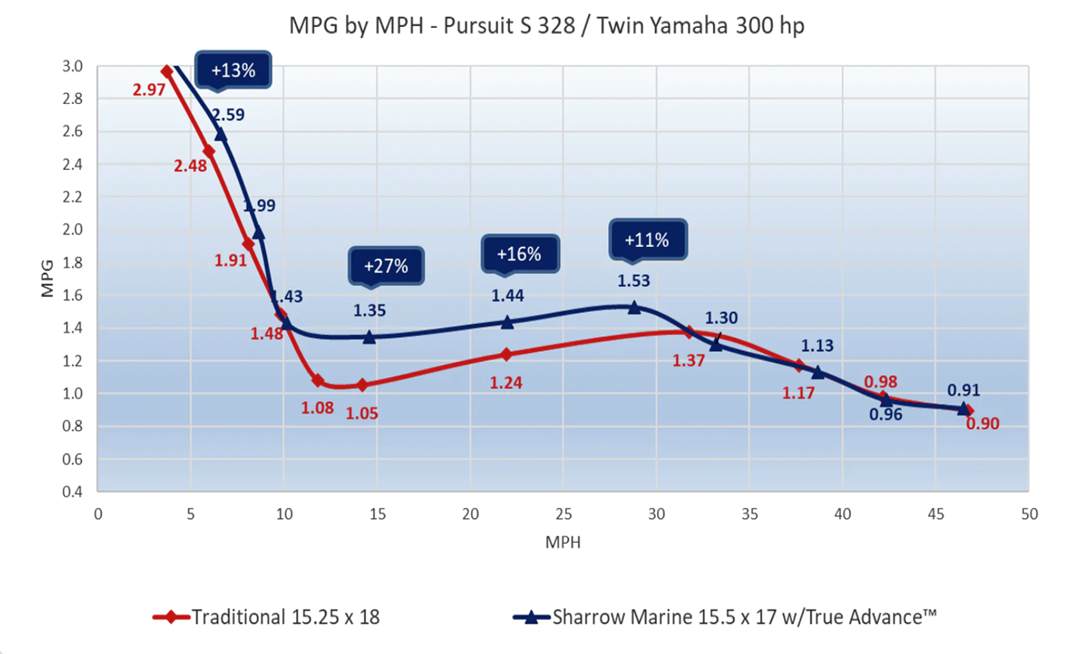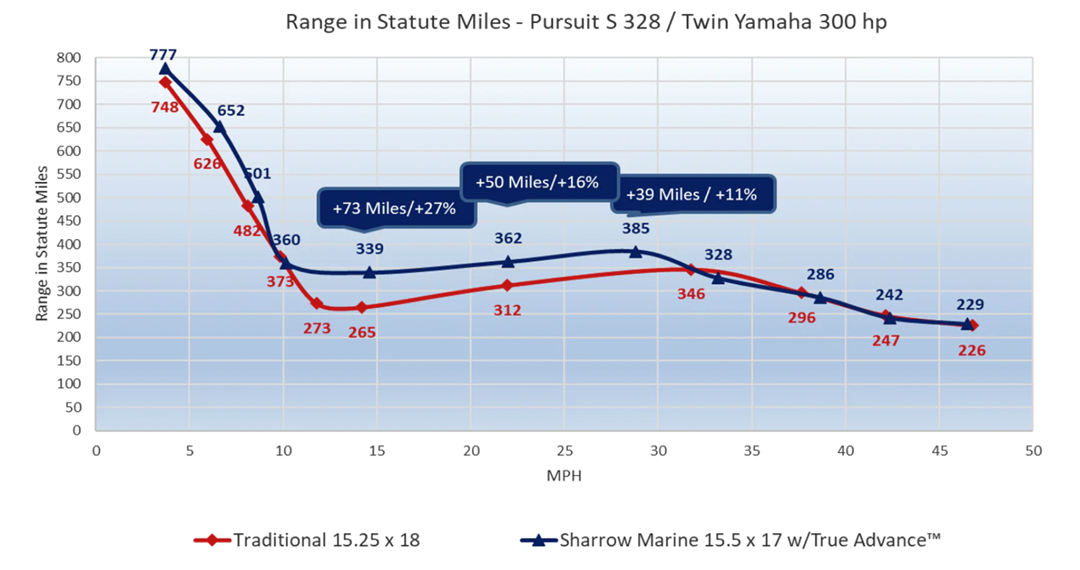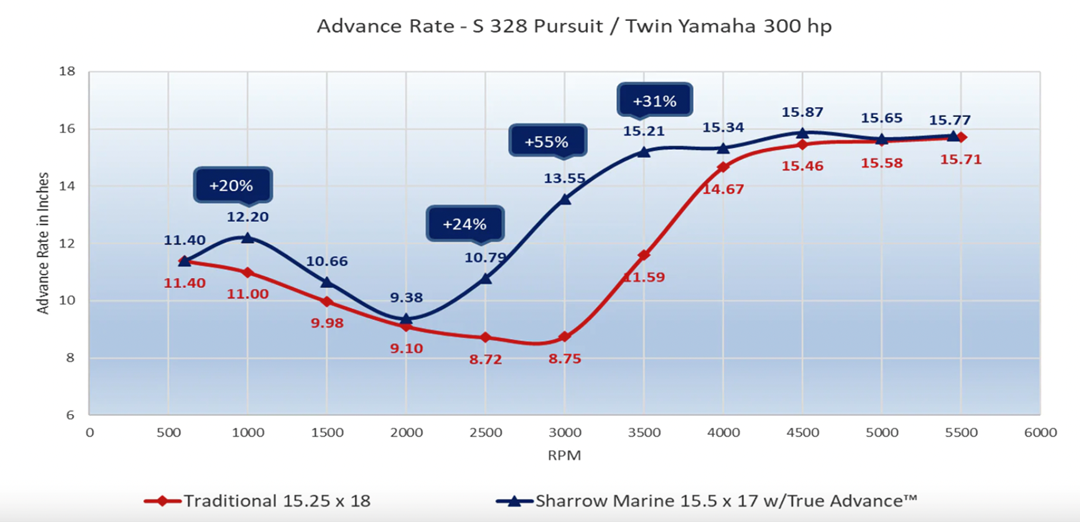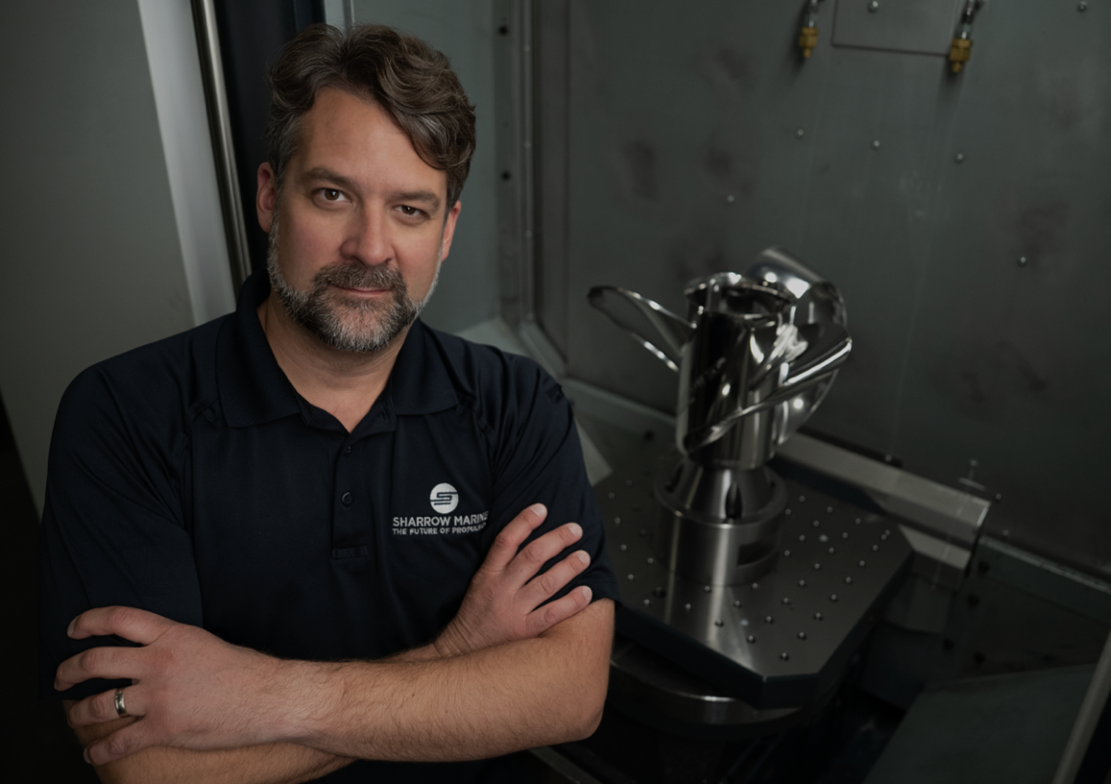Sharrow Props Make the Pursuit S 328 Go 31% Faster
Old Technology vs New Technology
The Pursuit S 328 is one of the most popular boats in class and with the addition of a couple of Sharrow props, it can be greatly enhanced. Who wouldn’t want an increase in speed at virtually every RPM? It all has to do with reduced drag, virtually eliminating cavitation and getting a better grip on the water — in forward and reverse. Find out how much more efficient Sharrow props are on the Pursuit S 328 than legacy props.
All boat builders like to brag about how fast their boats go, even though no one drives their boats at WOT for more than a couple of minutes. What’s far more important is how fast the boat goes in the mid-range where most people operate their boats, say, between 20 mph and 32 mph. It’s there that the revolutionary Sharrow loop prop shines in virtually every test conducted by BoatTEST.
We did not conduct the comparison test on the Pursuit S 328 with conventional and Sharrow props, but the techs at Sharrow did and their results are recorded on the charts on this page. We believe them to be accurate.
Getting on Plane
In the chart above, note that the Pursuit reached 20 MPH and got on plane at about 2800 RPM. The Pursuit using conventional props is still wallowing, trying to get on plane at that RPM and it won’t achieve it for another 500 RPM before getting over the hump and going 20 MPH.
Getting on plane sooner means the sooner the bow comes down, the sooner the ride smooths out and the sooner the engine can reach its most economical point of operation. There was a time when most engine makers liked for their engines to be their most efficient at 3500. But, as boats have gotten bigger and heavier, that goal is harder to achieve with existing prop technology.
In the comparison test here on the Pursuit 328 powered with twin Yamahas, the engines were most efficient at 4000 RPM — going 32 mph.
As the chart above demonstrates, the conventional prop and the Sharrow prop get about the same miles per gallon at 33 mph. In fact, between 33 mph and 45 mph, the boat gets slightly more MPG with the standard props than it does with the Sharrow props. The trade-off is that for most of the rest of the RPM range, the new technology is more efficient. At 28 mph, where many boats are most comfortable in a variety of conditions, the engines are 11% more efficient with Sharrow props.
Greater efficiency turns into a greater range. The chart above confirms that the old technology, which is dialed in to go fast, has a better range from 33 mph to 45 mph and the Sharrow prop is superior below that.
Greater Advance with Less Pitch
In this chart, we see something that is quite remarkable. Even though the Sharrow prop has one inch less pitch than the traditional design, at 3500 the Sharrow 17" pitch prop advances 15.21" compared to an advance of just 11.59" with the conventional 18" prop.
The legacy prop is beating up a storm underwater but is getting less traction, producing much less thrust than the lower-pitch Sharrow. It’s turning the same number of RPM, so where is all of that energy going? The answer is that it is fighting the drag of cavitation. So, while the old prop architecture is cavitating between 3000 and 3500 RPM — in essence spinning its wheels — the Sharrow prop is traveling from 31% to 55% farther.
But higher speed, greater fuel efficiency in the mid-range and quicker times to plane are only part of the story of the amazing Sharrow prop. Sharrow claims that its props are from 50% to 80% quieter than conventional wheels. But we’ll save that for another report.
Greg Sharrow was a professor at the Curtis Conservatory of Music when he conceived the idea of the loop propeller that now bears his name. He worked on the concept for years in his spare time, while holding down his day job, making all sorts of mockups and trials before bringing his design to the University of Michigan — which is arguably the best school of naval architecture in the U.S. There, the validity of his invention was confirmed by fluid dynamics engineers in sophisticated tests in the U of M test tank.
Today, Sharrow Engineering holds over 125 patents in all major countries in the world including 14 in Europe, plus China, Russia, Japan and South Korea, among many others.
